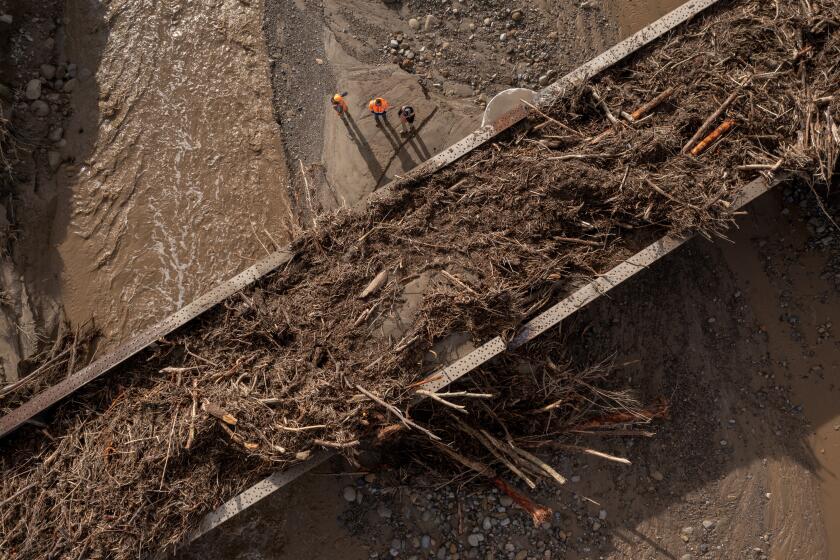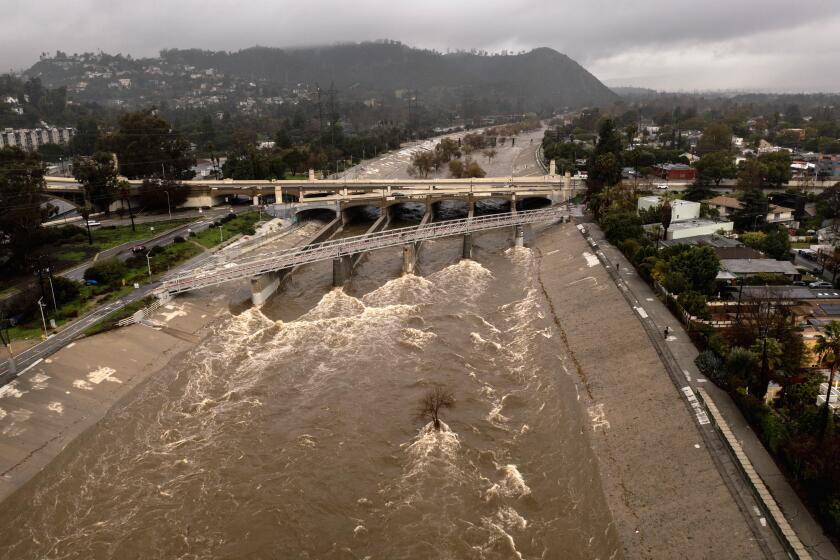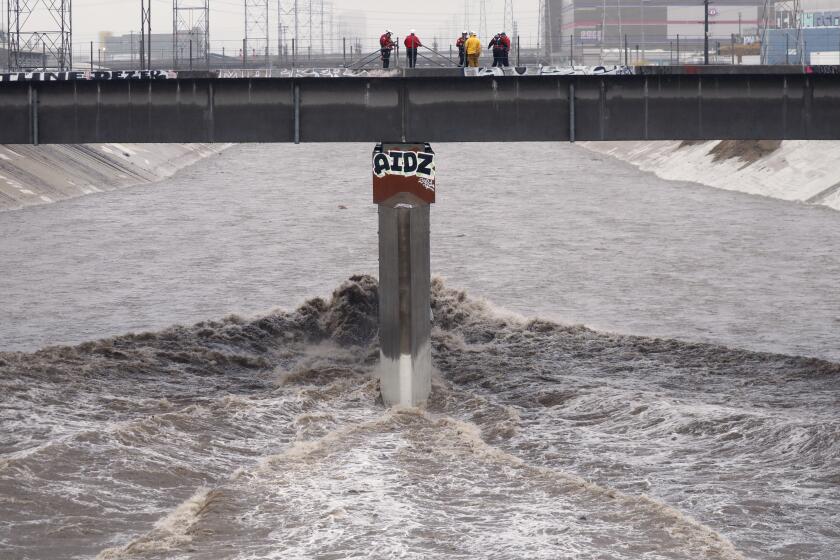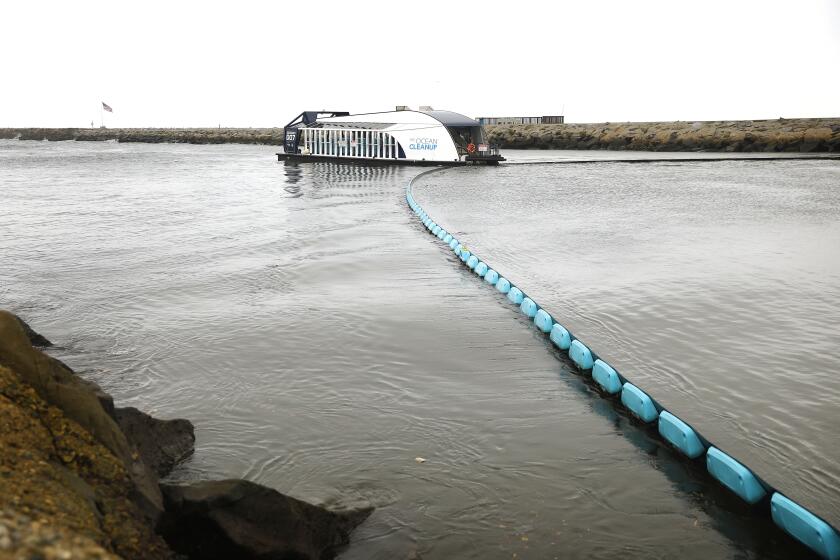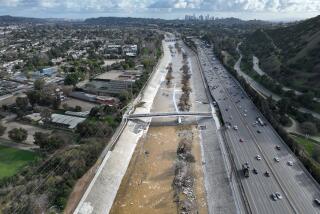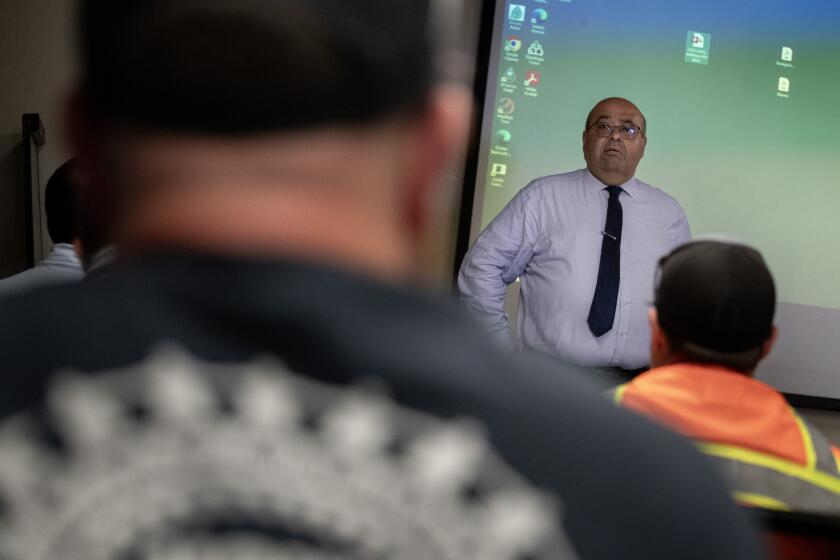L.A. lets rain flow into the Pacific Ocean, wasting a vital resource. Can we do better?
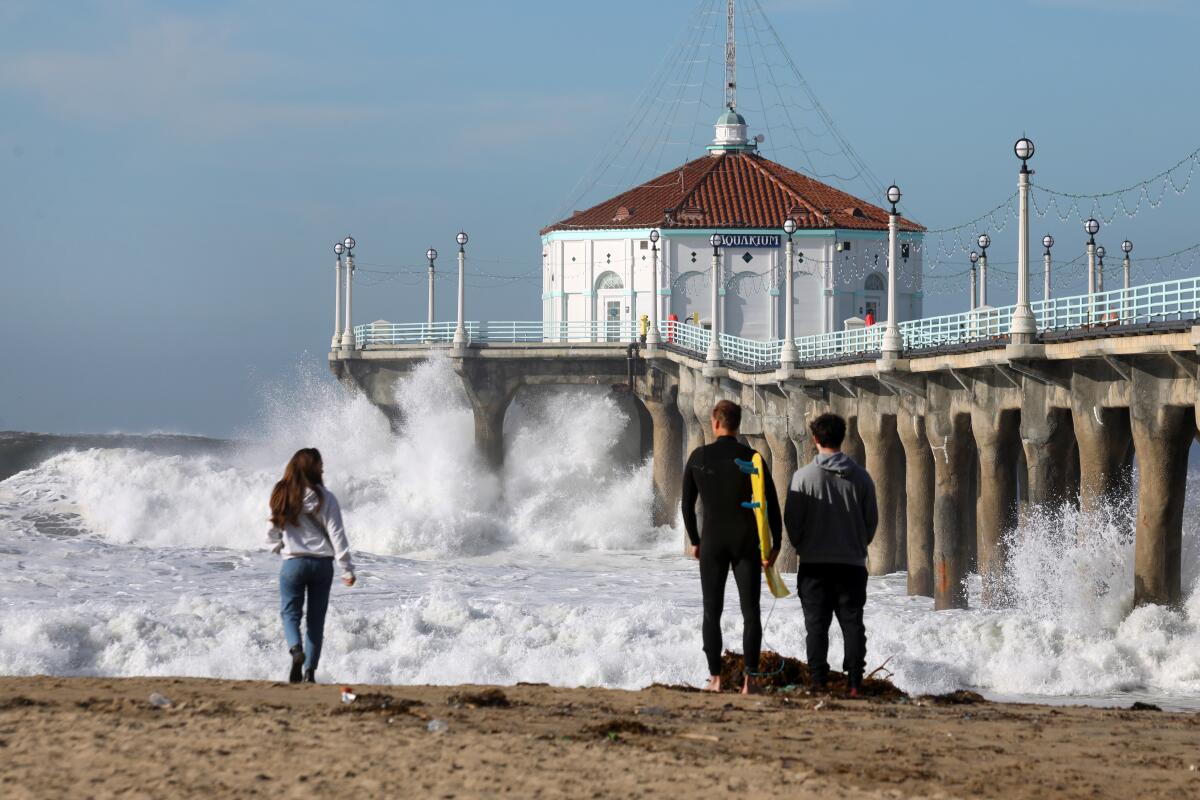
The Los Angeles River roared to life this week as a series of powerful storms moved through the Southland. In Long Beach, 3 feet of water shut down the 710 Freeway in both directions, while flooding in the San Fernando Valley forced the closure of the Sepulveda Basin.
It was by all accounts a washout, but despite heaps of water pouring into the area, drought-weary Los Angeles won’t be able to save even half of it. The region’s system of engineered waterways is designed to whisk L.A.’s stormwater out to sea — a strategy intended to reduce flooding that nonetheless sacrifices countless precious gallons.
Voters in 2018 approved Measure W, which is aimed at improving L.A.’s aging stormwater capture system. Officials are making progress, but experts say there’s a long way to go. Of an estimated 5 billion to 10 billion gallons pouring into the Los Angeles Basin from current storms, only about 20% will be captured by the county.
“In a region that imports 60% of our water, it’s just a huge untapped potential for a local water supply,” said Bruce Reznik, executive director of L.A. Waterkeeper. “We passed the Safe Clean Water Program to get us there, but we’re just not there yet. It’s going to take us some years.”
The powerful storm that knocked out power, toppled trees — including one that killed a toddler — and flooded homes along the coast in Santa Cruz continued its march through the region.
Many years, in fact. County officials have said it will take three to five decades to build its stormwater capture system to full capacity, with the ultimate goal of capturing 300,000 acre-feet, or roughly 98 billion gallons, of water annually.
Part of the challenge is that the current system was built about 100 years ago, in an era when Angelenos were more concerned about saving lives and property from flooding than they were about drought. Their solution was to lay millions of barrels of concrete to get rid of that water faster — channelizing the L.A. River, Ballona Creek and nearly every other waterway in the area.
Though a few regional watersheds, such as the Upper San Gabriel River, have good soils and systems for capturing stormwater, they are few and far between, with the vast majority of water that comes to the region “on a superhighway to get out,” said Reznik.
“Water is the most precious resource we have, something that we cannot live without, and yet we do everything we can, when it comes to rain, to get rid of it as soon as possible,” he said.
The most recent storm pounded the Southland, closing piers and eroding beaches, and spurring water rescues and some evacuation orders.
Los Angeles County Department of Public Works spokesman Kerjon Lee said Measure W is working, however. Since its approval in 2018, the agency has awarded $400 million to more than 100 regional infrastructure projects, such as the Rory M. Shaw Wetlands Park Project to convert a 46-acre landfill into a wetlands park that can collect stormwater runoff.
But he also said much of the rain is ending up in the Pacific, with L.A. River outflows measuring about 28,500 cubic feet per second Thursday.
“The conditions were ripe for capturing more, but when it comes all at once — which is kind of how we get our water here — we’ve got to move that water away from city streets and away from properties to save life and property,” Lee said. “We have that dual mission: flood protection and supporting local water supply.”
City officials said similarly that stormwater capture capability is improving, including about 20 projects from the Los Angeles Department of Water and Power in the last decade. Updates to the Tujunga Spreading Grounds facility in the San Fernando Valley, for example, doubled its ability to capture stormwater from 8,000 acre-feet per year to 16,000.
But managing the influx of water in a drought is a delicate dance, according to Marouane Temimi, an associate professor in the Department of Civil, Environmental, and Ocean Engineering at the Stevens Institute of Technology.
During normal rain events, green infrastructure projects such as parks and gardens can help capture and store more water. But during extreme events, such as the atmospheric rivers hitting California this week, larger infrastructure investments are needed.
“Each city has to balance between the major and the minor infrastructure projects to control runoff from extreme events, as well as frequent events, to cover the whole spectrum of rainfall, because throughout the years, we receive different rainfall events with different magnitudes,” he said.
Rain can also bring pollution as the stormwaters sweep up debris, dirt, litter and even chemicals from roadways. While managing water quality is important, Temimi said it falls second to managing quantity during major flood events. At least three people were killed by floodwaters in Northern California this week.
In 2018, L.A. County voters approved Measure W, a massive tax aimed at protecting beaches and improving water supply through storm water capture. Yet only $95.5 million has been disbursed for projects out of $556 million collected.
The problem is not unique to Los Angeles. California Natural Resources Secretary Wade Crowfoot said the whole state is dealing with aging infrastructure that need improvement.
“In order to be resilient to floods and drought, which are kind of two sides of the same coin of extreme weather, we need to be able to adapt our infrastructure to the new normal,” he said. “And that means significantly expanding water recycling, capturing stormwater, modernizing conveyance and recharging groundwater basins, and so we’re in a race.”
Crowfoot called Measure W a “world-leading policy,” that can also help reduce pollution from reaching oceans and bays.
“We are missing an opportunity to actually take that water that’s falling in greater L.A. and actually putting it into the groundwater basins for future use,” he said. “L.A., as a result of Measure W passing four years ago, has more resources than almost any other place in the country to do that. But the implementation is very much a work in progress.”
There are other hurdles, said Anne Lynch, integrated water management lead with engineering and consulting firm GHD. She noted that while droughts and floods are “not mutually exclusive,” it can be hard to garner public and political will for storm projects in dry times.
The state’s last big funding bill allotted far more to sectors such as transportation than to water, she said, which “tells you how, as a society, we view water — it’s out of sight, out of mind until there’s a catastrophe.”
The atmospheric river storm hitting California this week presents a test for an experimental waste-capturing system that’s intended to keep plastic bottles, diapers and other trash from flowing into the Pacific.
Water managers also have to work around the existing environment — including the hundred-year-old system designed for a different climate — which can create challenges for planning new projects.
“Not only are we dealing with the built environment but this ever increasing flow that’s coming into the system,” she said. “So we’re like, behind the eight ball.”
More to Read
Sign up for Essential California
The most important California stories and recommendations in your inbox every morning.
You may occasionally receive promotional content from the Los Angeles Times.
